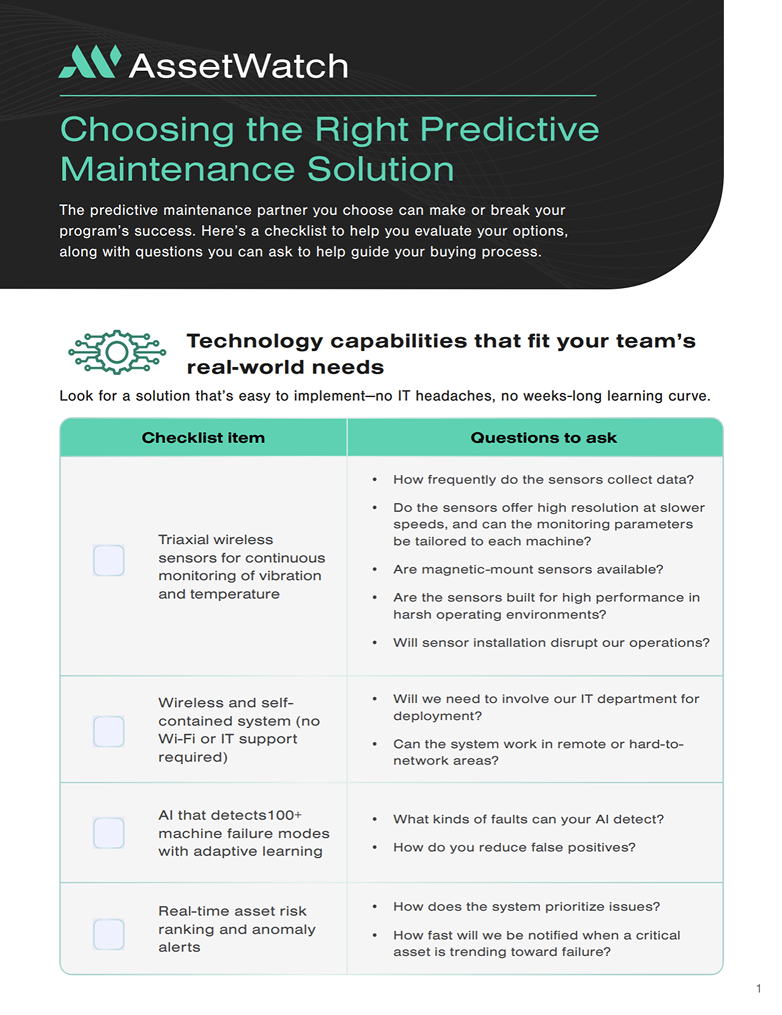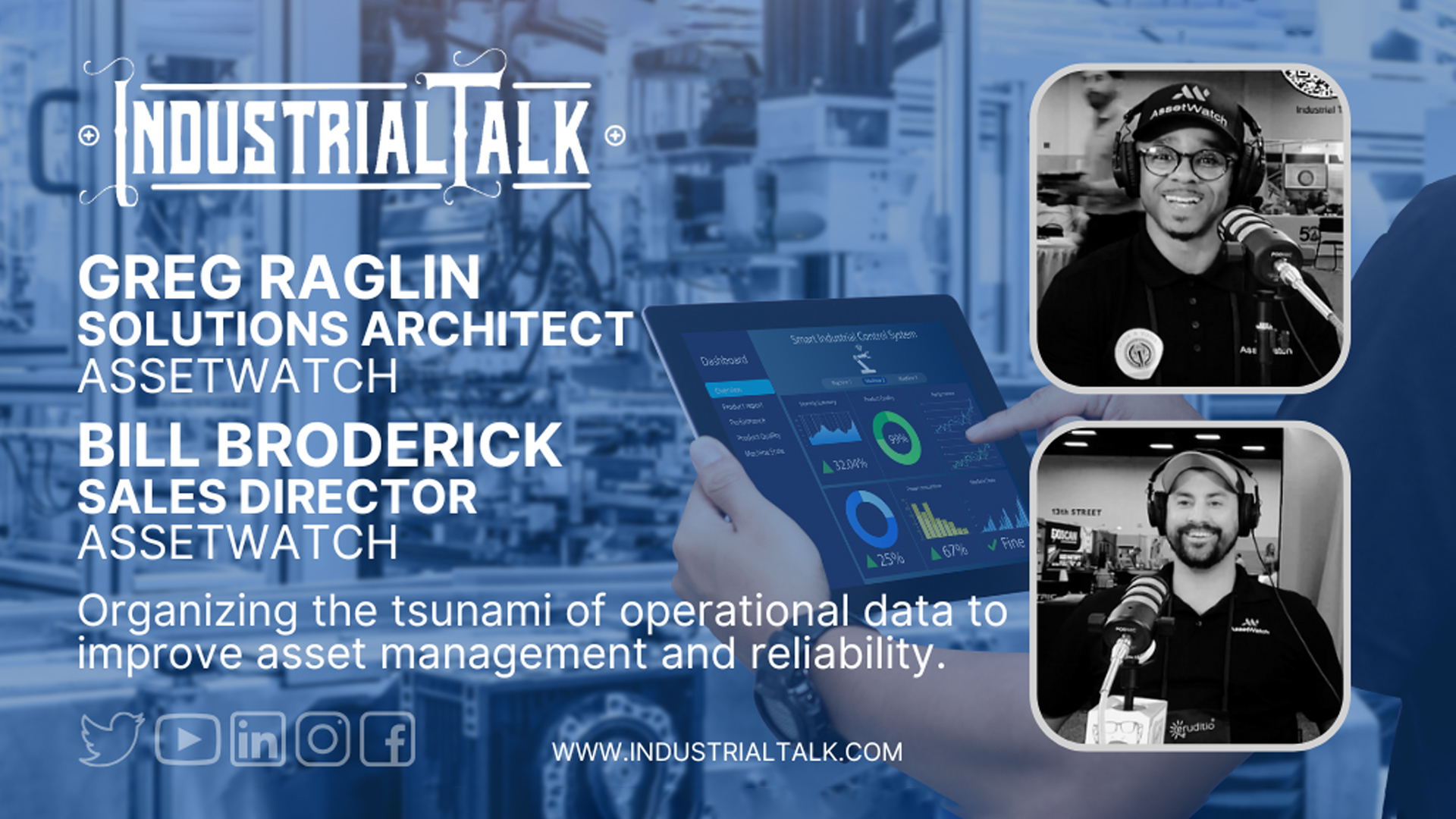With rapidly evolving technology and increasing demands on process manufacturing, the paradigm for asset health management is shifting. Monitoring the condition of your equipment, particularly rotating assets, is critical to maintaining your production efficiency and the overall health of your operation. In today's environment, two types of monitoring practices are emerging as the front-runners - continuous monitoring for Tier 1 and some Tier 2 assets, and route-based monitoring for Tier 2 and Tier 3 assets. Let’s delve into why these methods are best suited to their respective tiers.
Understanding the Current Monitoring Environment
In the realm of process manufacturing, asset health management traditionally falls into one of three categories.
The first involves hiring a third party to run vibration routes and collect data. This approach often leads to significant delays - weeks may pass before you receive analysis reports. Additionally, these reports are typically static, lacking an open dialogue for prescriptive insights. To fully comprehend and utilize the insights, a deep understanding of the report is necessary. Furthermore, follow-up readings or ad-hoc readings often require rescheduling visits, causing further delays and inefficiencies.
The second approach sees companies taking on vibration monitoring in-house. While this method offers immediacy, it comes with its challenges. In-house vibration expertise becomes essential, along with the need for expensive handheld equipment. Moreover, the standalone analysis software utilized for this purpose is often disconnected from the broader ecosystem of the rotating equipment's health data.
The last approach, which unfortunately many companies still adhere to, is running to failure - effectively performing no vibration monitoring at all. This practice is the most expensive in the long run. It fosters a reactive maintenance culture, leading to unnecessary costs, equipment breakdowns, and unplanned downtime.
In contrast, a more proactive and efficient approach lies in continuous monitoring for critical Tier 1 and some Tier 2 assets, and route-based monitoring for all other Tier 2 and Tier 3 assets, then bringing it all together in one unified platform for a holistic view of asset health.
The Power of Continuous Monitoring for Tier 1 Assets
Continuous vibration monitoring is the best practice of regularly monitoring equipment to detect changes in performance, identify potential issues, and predict failures. It is ideally suited for assets that, if failing, would cause a significant production halt or incur excessive repair or replacement costs. Criticality of equipment is often determined in an FMEA, or failure modes and effects analysis.
Implementing continuous monitoring systems for these critical assets offers a host of benefits. Firstly, it allows for real-time data collection and analysis, providing an immediate understanding of the asset's condition and performance. With continuous data flow, you gain a holistic view of your asset's health, enabling proactive and predictive maintenance strategies.
Moreover, continuous monitoring reduces the risk of unexpected breakdowns and the costly downtime associated with them. By detecting changes in performance or potential issues early, you can better schedule maintenance activities to prevent catastrophic failures. As a result, it improves the Overall Equipment Effectiveness (OEE), leading to increased productivity and reduced operational costs.
Why Route-Based Monitoring Is Ideal for Tier 2 and Tier 3 Assets
While Tier 1 and some Tier 2 assets command continuous monitoring due to their high criticality, most Tier 2 and Tier 3 assets - which may not be as critical but are still important to monitor for maintenance planning and reducing maintenance spend by detecting faults early - are perfectly suited for route-based monitoring.
In route-based monitoring, a maintenance professional (either in-house or from a third-party service provider) uses portable equipment to periodically monitor the condition of assets along a predetermined route. This method is a more cost-effective solution for less critical assets that don't require the continuous data collection provided by permanent monitoring systems.
Route-based monitoring offers flexibility, allowing maintenance personnel to cover a larger number of assets in a shorter period. It captures the necessary vibration data for these assets, facilitating the early detection of potential problems.
Furthermore, when paired with a modern solution like a cloud-based platform, the collected data can be analyzed and visualized for quick and efficient decision-making. This harmonization of data collection and analysis makes route-based monitoring a valuable tool in the arsenal of any maintenance manager.
Bridging the Gap with Modern Solutions
Modern monitoring solutions like AssetWatch Vero for continuous monitoring and AssetWatch Collect for route-based monitoring, are now available that merge the best of both worlds in a single user-friendly cloud-based platform that makes it easy to collect, analyze, and visualize machine health data, providing prescriptive insights on all assets.
Such solutions offer the advantage of no capex requirements and eliminate the need for costly in-house analysis & training. As a result, they are a benefit for maintenance personnel, giving them time back in their day to focus on other crucial tasks.
Which One Comes First?
While monitoring all rotating equipment is necessary to truly eliminate unplanned downtime, improve OEE and propel your organization further into proactive maintenance strategies, you can probably guess that starting with continuous monitoring on Tier 1 assets is the first order of business. This is because continuous monitoring has the best success and chance at monitoring trends, predicting failures and providing quick wins for your organization – making you the ultimate hero to provide measurable results and ROI. With that in hand for your leadership team, it is easier to build the case for additional investments of other condition monitoring solutions like route-based monitoring for remaining assets or incorporating oil analysis. Should vibration or oil analysis come first? Check our blog entitled Combining Vibration and Oil Analysis: A Force Multiplier for Eliminating Unplanned Downtime.
Conclusion
The need for effective asset health management in process manufacturing has never been greater. With the right monitoring strategy - continuous monitoring for your most critical assets and route-based monitoring for your less critical but still important assets - you can maintain your equipment's health, improve your overall operational efficiency, and ultimately bolster your bottom line. The future of asset management is here, and it is more proactive, efficient, and data-driven than ever before.



















